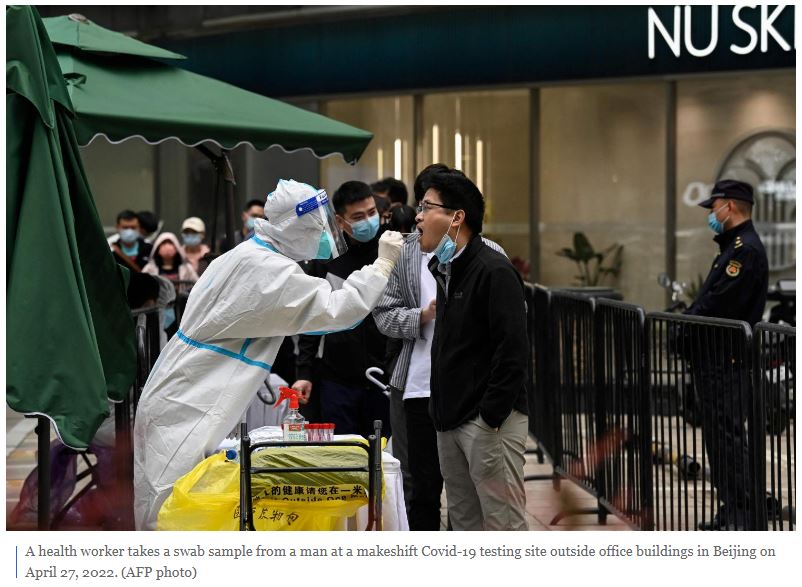TAT aims to rekindle East Asian market
As many destinations relax travel requirements to welcome a new flow of tourists after two years of battling the Covid-19 pandemic, some East Asian nations remain vigilant with strict Covid-19 arrival rules.
To keep Thailand a top destination for East Asian visitors and prepare for further loosening of travel restrictions, the Tourism Authority of Thailand (TAT) continues to seek opportunities to support the recovery.
STRINGENT LOCKDOWN
Kanokkittika Kritwutikon, director of the TAT’s Chengdu office in China, said tight border controls and preventive measures for domestic travel as part of Beijing’s zero-Covid policy will continue for the time being, particularly in Chengdu, which hosts the World University Games in June.
Hong Kong is maintaining strict quarantine requirements for fully vaccinated visitors, with those accompanied by children aged 11 or younger only discharged on the seventh day after arrival, followed by self-monitoring for seven days, said Naparat Vudhivad, director of the TAT’s Hong Kong office.
The main obstacle is the lack of air travel, as the Hong Kong government imposed a temporary ban on any airlines carrying a minimum of three passengers who test positive.
Bangkok Airways hopes to resume the Koh Samui-Hong Kong route by the end of this year, while Greater Bay Airlines plans to restart its Hong Kong-Bangkok service during the third quarter.
Seksan Sripraiwan, director of TAT’s Tokyo office, said international flights have not fully resumed as leisure travellers are still not allowed to visit Japan.
At present, each flight is limited to only 80% capacity due to social distancing rules.
Japanese visitors to Thailand during the first four months of 2022 remained weak at 3,000-5,000 per month on average.
Under the authority’s base case scenario, the number of Japanese tourists is expected to reach 35,000-40,000 this year, though the situation could improve if there is further loosening of travel rules on both sides.
Mr Seksan said if Japan eases travel rules in July and August, Bangkok, Pattaya and Phuket can expect to lure more of this market.
KEEN ON FIRST MOVERS
He said the Tokyo office wants to attract groups that can travel despite existing regulations, particularly business and leisure groups who need to look after their businesses or factories in Thailand, in addition to golfers, which boast a market size of 20 million.
Another target is the youth segment, covering those on educational exchange programmes as well as wealthy young adults who are willing to pay for luxury products.
Mr Seksan said the trend of telework has accelerated as there are around 20 million Japanese digital nomads. Thailand should be able to attract many of them to travel while working, he said.
Tax perks and other incentives are the key lures for teleworkers, as people who work remotely from other countries can pay a personal income tax rate of 30%, compared with 50% in Japan.
Mr Seksan said the Tokyo office will introduce a “Blecation campaign” combining business, leisure and vacation to attract corporate firms and independent tourists. Bangkok, Phuket, Chiang Mai and Pattaya are the key destinations, with connections to Krabi and Trang for meetings and incentives.
Meanwhile, Mrs Kanokkittika said the TAT’s China office is targeting three segments: business travellers; medical tourists interested in wellness and in vitro fertilisation packages; and students who want to enrol in business, tourism and finance programmes in Thailand.
“We have to erase the impression of typical big Chinese groups seen during the pre-Covid period because only tourists with high spending power can travel abroad now due to higher costs,” she said.
The student segment has growth potential as on-site programmes in Thailand can continue. The TAT has conducted joint promotions with universities that have offices in Chengdu, such as Rangsit University and the University of the Thai Chamber of Commerce, as well as partner airlines to bring in more students.
Mrs Kanokkittika said the TAT assisted 500 Chinese students in March, while at least 2,000 students are expected to arrive next year based on more than 10,000 students already registering with universities.
As Hong Kong travellers are greatly influenced by celebrities and social media, the TAT will promote the Thailand via online content from key opinion leaders, local media and online travel agencies, said Ms Naparat. The TAT plans to participate in the International Travel Expo Hong Kong from Aug 18-21.
Source: https://www.bangkokpost.com/business/2303994/tat-aims-to-rekindle-east-asian-market


 English
English




